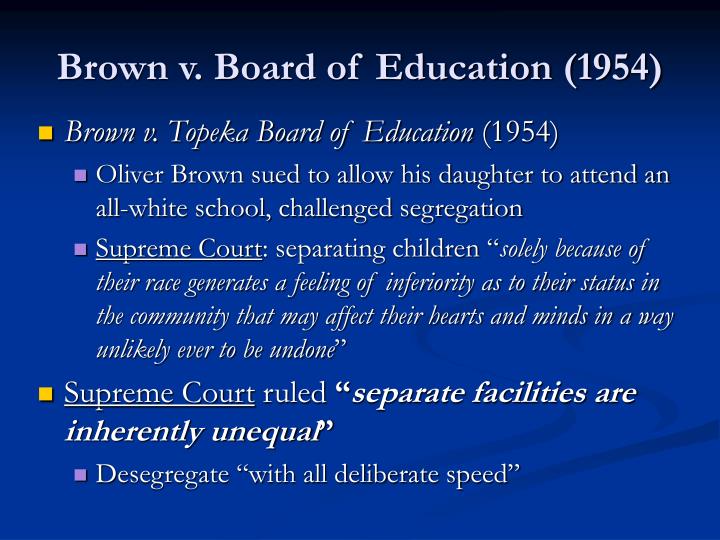

The intent was to create a more adequate education for minorities in a system that was governed by competent teaching, adequate facilities and rigorous standards. The Brown decision initiated a worthy struggle to desegregate the nation’s public schools and spurred attempts to make college education accessible to a larger numbers of disadvantaged minorities. On May 17, 1954, the Supreme Court declared that separate educational facilities were inherently unequal because they deprived black students of equal protection under the law.

Both developments are compromising the original intent of Brown. Ironically, re-segregation has become prevalent in some school districts while at the university level affirmative action programs, intended to produce greater educational opportunity for minorities, have lowered admissions standards. Board of Education, America’s schools and universities are struggling with the challenge of providing equal educational opportunity in an increasingly multi-cultural society. Supreme Court struck down desegregation in the landmark decision Brown v. An appendix presents significant state Supreme Court rulings that have struck down or upheld the existing school finance system.Fifty years after the U.S. Winston) notes the presidency's limits in addressing the problem.

"Educational Equity and the President's Initiative on Race" (Judith A. "Electoral Politics and School Finance Reform" (Jeffrey Henig) examines the state electoral considerations that affect educational equity. Reed) discusses the trajectory from school desegregation lawsuits to school finance lawsuits, suggesting that school finance suits generally make a difference. "State Courts and Educational Finance" (Douglas S. Reed) maintains that the levels of racial oppression and racial conflict were altered by the decision, though it did not create a more equal educational system. Board" (Roger Wilkins) suggests that the case changed the expectations of black Americans in ways that ultimately had profound consequences for the nation. Patterson) highlights the impact of the case on the civil rights movement and school integration or desegregation and educational quality, asserting ambivalence about the role of Brown v.

Board of Education: A Civil Rights Milestone and Its Troubled Legacy" (James T. These papers are based on a 2002 seminar that examined the book "Brown v.


 0 kommentar(er)
0 kommentar(er)
